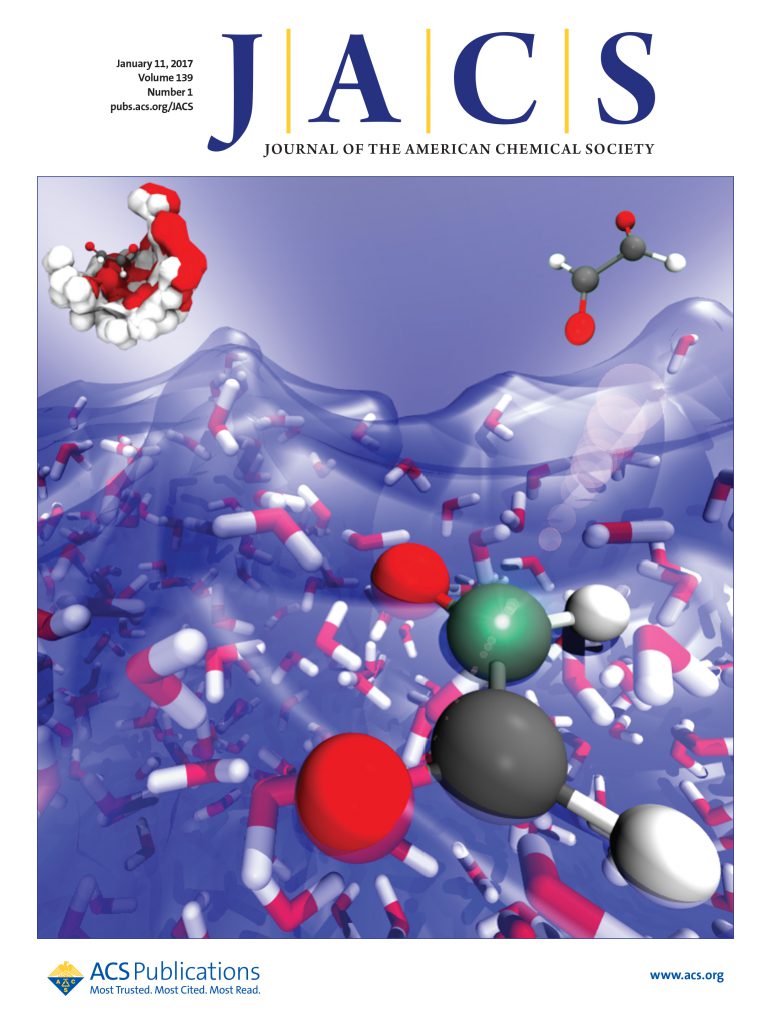Small Molecule Catalyst for Peptide Synthesis.
IF 14.4
1区 化学
Q1 CHEMISTRY, MULTIDISCIPLINARY
引用次数: 0
Abstract
Peptide synthesis is a highly optimized process that has led to the production of new classes of therapeutics and materials. The process of peptide synthesis is straightforward: commercially available, orthogonally protected amino acids can be linked on the solid phase using highly efficient coupling agents. However, the simplicity of peptide synthesis masks a significant drawback of the current method: it is highly wasteful and utilizes a solvent that is facing restrictions on its use. A catalyst that allows solid phase synthesis of peptides in benign solvents without requirement for excess reagents and protected amino acids would have a significant impact. Here, we describe the development of a small molecule catalyst for peptide synthesis. The catalyst design incorporates redox recycling of diselenide and phosphine with air as the ultimate oxidant and phenylsilane as the ultimate reductant. The catalyst affords efficient coupling of amino acids in the solution and solid phase. Significantly, the catalyst functions with acetonitrile, bypassing the need for DMF. The current effort builds on mechanistic analysis of reaction rates and intermediates in our prior work which led to a hydrogen bonding catalyst: [Handoko; ; Panigrahi, N. R.; Arora, P. S. J. Am. Chem. Soc. 2022, 144, 3637-3643]. Here, we significantly simplified earlier designs to afford an easily accessible small molecule catalyst.肽合成的小分子催化剂。
肽合成是一种高度优化的过程,它导致了新型治疗药物和材料的生产。肽合成的过程是直接的:市售的,正交保护氨基酸可以连接在固相使用高效的偶联剂。然而,肽合成的简单性掩盖了当前方法的一个重大缺点:它非常浪费,并且使用的溶剂面临使用限制。一种催化剂,允许固相合成肽在良性溶剂,而不需要多余的试剂和保护氨基酸将有重大影响。在这里,我们描述了一种用于肽合成的小分子催化剂的发展。催化剂设计结合了二硒化物和磷化氢的氧化还原回收,空气作为最终氧化剂,苯硅烷作为最终还原剂。催化剂在溶液和固相中提供氨基酸的有效偶联。值得注意的是,催化剂与乙腈一起作用,绕过了DMF的需要。目前的努力建立在我们之前的工作中对反应速率和中间体的机理分析的基础上,这导致了氢键催化剂:[Handoko;;纽约州帕尼格拉希;P. S. J.阿罗拉。化学。[j].生物工程学报,2016,32(4):357 - 357。在这里,我们大大简化了早期的设计,以提供易于获取的小分子催化剂。
本文章由计算机程序翻译,如有差异,请以英文原文为准。
求助全文
约1分钟内获得全文
求助全文
来源期刊
CiteScore
24.40
自引率
6.00%
发文量
2398
审稿时长
1.6 months
期刊介绍:
The flagship journal of the American Chemical Society, known as the Journal of the American Chemical Society (JACS), has been a prestigious publication since its establishment in 1879. It holds a preeminent position in the field of chemistry and related interdisciplinary sciences. JACS is committed to disseminating cutting-edge research papers, covering a wide range of topics, and encompasses approximately 19,000 pages of Articles, Communications, and Perspectives annually. With a weekly publication frequency, JACS plays a vital role in advancing the field of chemistry by providing essential research.

 求助内容:
求助内容: 应助结果提醒方式:
应助结果提醒方式:


